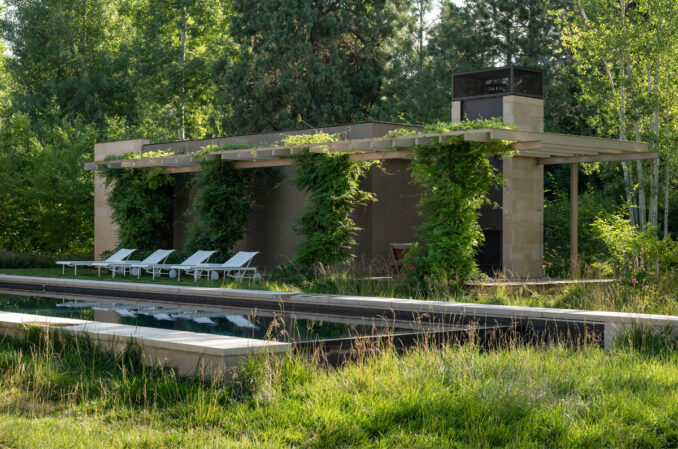
As cities grapple with the consequences of climate change, lush pockets of nature—including large-lot, urban parcels in historic neighborhoods that have been absorbed into a rapidly growing metropolitan area—can serve as effective and transferable case studies in reconnecting diverse ecologies and contributing community value to make urban spaces more habitable.
Catalyzed by a family’s appreciation of horticulture, and their desire to create a distinct place that celebrates its regional setting, the designer forged a transformative vision across three acres, merging nature and nurture. Addressing years of deficient landscape management, the naturalistic sequence of restoration, refuge, and resiliency infuses biodiversity back into the city.
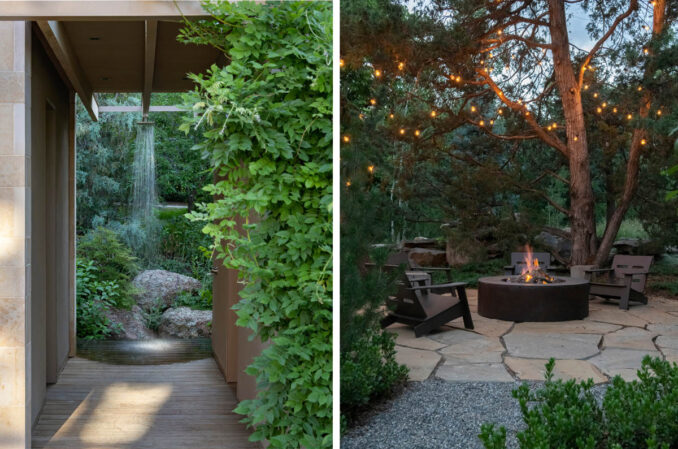
History
At the turn of the 20th century, the property was part of Denver’s first Polo Club, transitioning to a large-lot subdivision on the fringe of the burgeoning city in the 1940s. With flat, open prairie to the east, expansive mountain vistas to the west, and easy access to Cherry Creek, the neighborhood offered residents the ability to connect with the bountiful flora and fauna of Colorado’s Front Range. In the early 2000s, the three-acre parcel received a comprehensive update. However, a prolonged period of inadequate landscape management resulted in areas of unruly vegetative overgrowth and consumptive water use. These conditions, combined with decades of unruly development that further disconnect the land from open space, created the critical need to restore biodiversity to the urban setting.
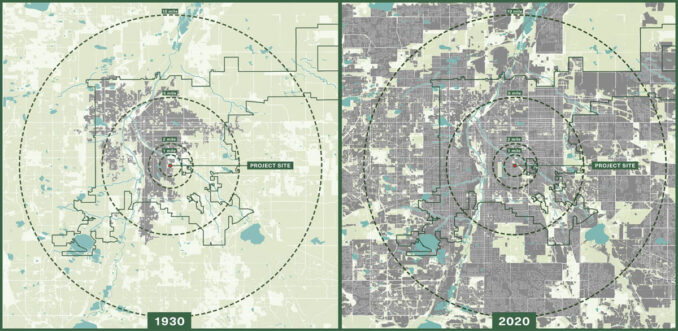
Prompt
In 2019, our clients purchased the property, setting forth a vision to create an urban landscape that celebrates horticultural expressions unique to the climate and geography of the region. Inspired by the ecological diversity of Colorado, the landscape architect transformed a property detached from its surroundings to one of multiple natural systems that reflects environmental responsibility, with an experiential journey of nature-based experiences – one that renders the urban surroundings an abstraction rather than a reality.
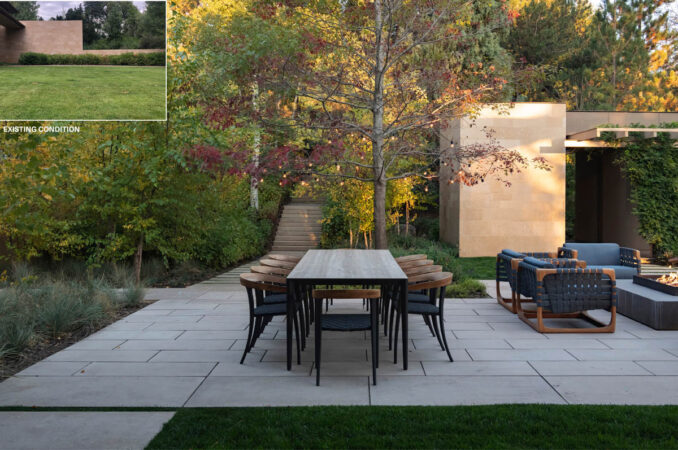
Regional Portraits
Like individual collections found within a botanical garden, horticultural vignettes coalesce with program elements. The entry drive meanders through an informal grove of Ponderosa pines – a species that naturalizes as the plains rise into nearby foothills – which emerge from a xeric perennial garden. Along north and east boundaries, an impenetrable rose thicket is transformed into a luminous shade garden, accented by regional boulders and specimen conifers. A stone ravine threads its way across the topography, its sinuous form able to harness intense seasonal stormwater events that define the region’s unpredictable weather patterns.
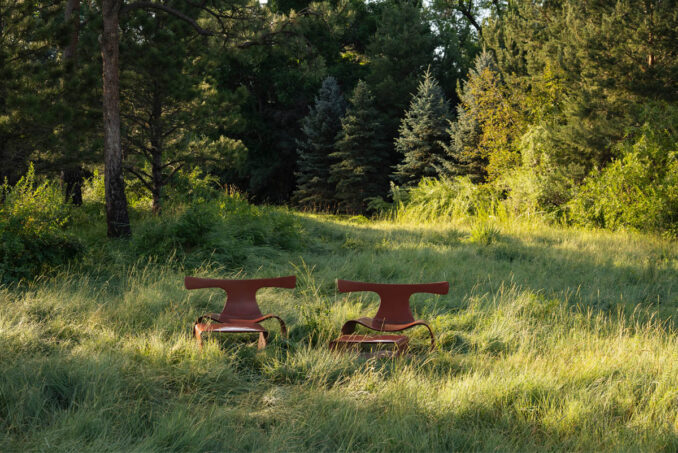
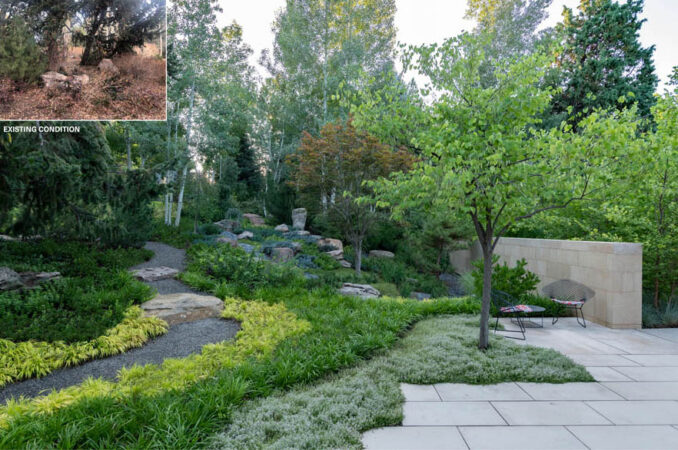
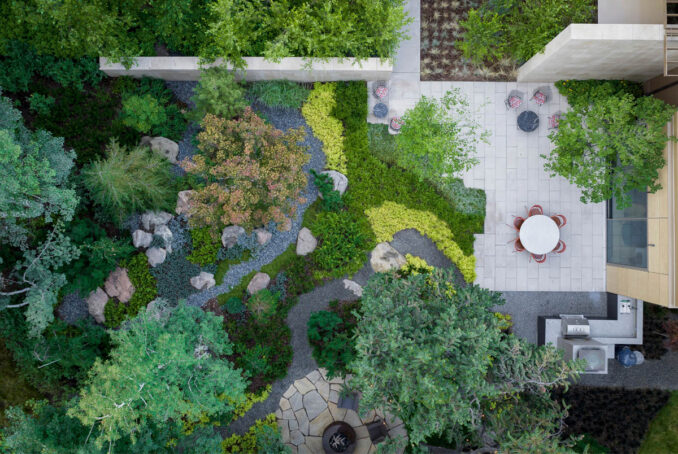
Fostering Habitat
Expansive, water-intensive lawns and formal, monocultural hedges maintained in contorted forms were replaced with a palette that approximates nature in an ecologically rich landscape. Species selection supports Denver’s Pollinator Trail, a city-wide initiative that aims to combat climate change, improve biodiversity, and reduce the heat island effect. Small mammals, a variety of birds, and even the occasional deer, find refuge in the regal specimen trees, each carefully protected through construction.
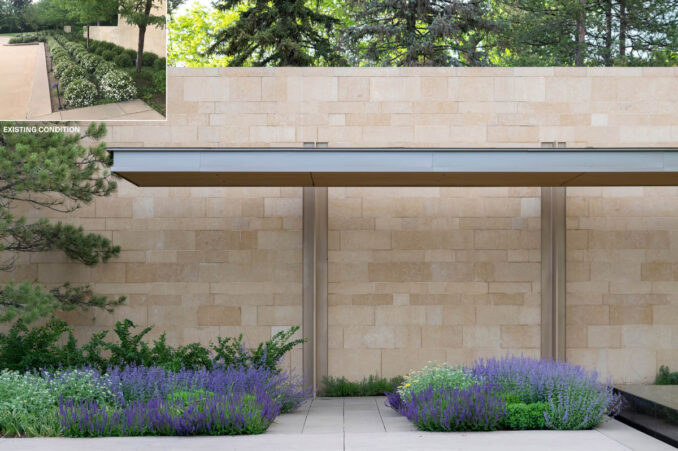
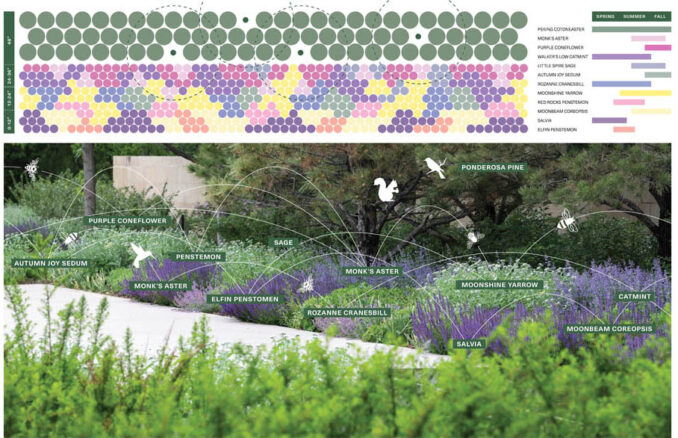
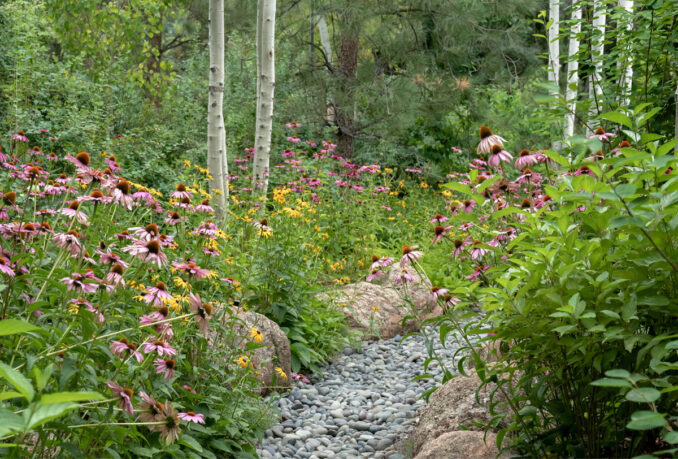
Immersive Experiences
Addressing existing microclimate issues, circulation challenges, and underutilized spaces, the design reinforces the family’s desire to find year-round enjoyment in their property. A monolithic architectural wall is shortened, a spatial edit that introduces light and accessibility to new gathering spaces, while a former lawn is transformed into a pavilion, its wisteria-cloaked shade structure offering respite to a geometric pool. Elements integral to the original design – including the fountain and open meadow – were rehabilitated and assimilated into the reimagined place.
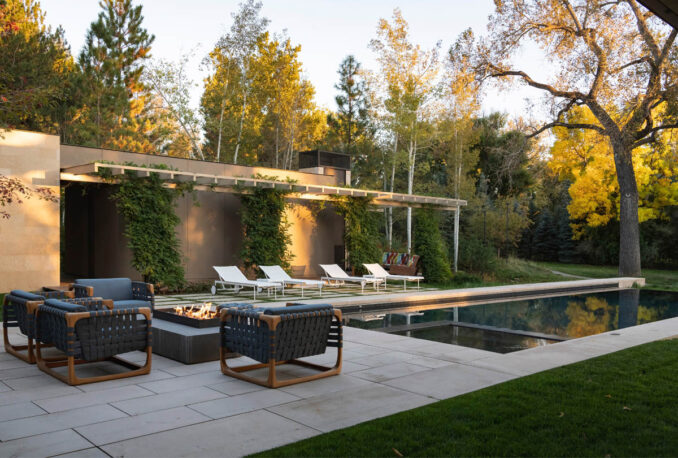
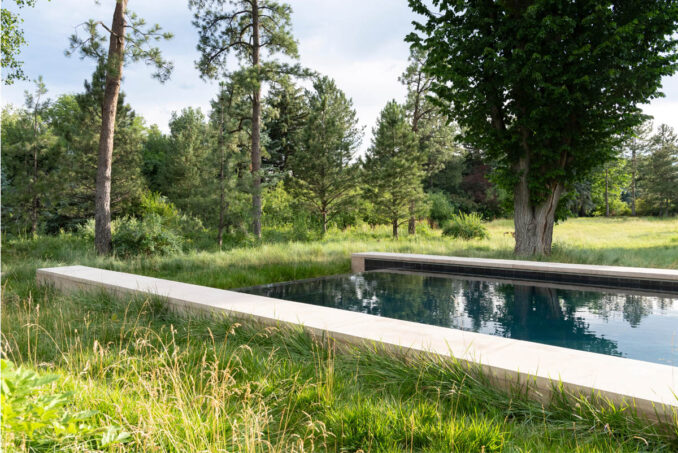
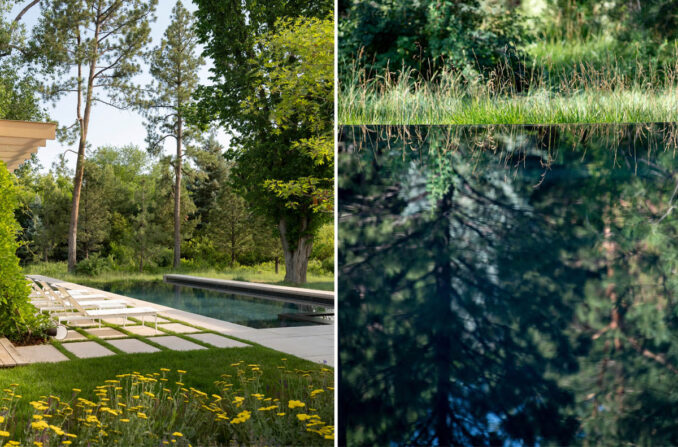
Advocating for Change
For the owners, the tradition of garden-making is synonymous with celebration, in the form of intimate and larger gatherings. Their pride of place is evident in the inspiration, contemplation, and reflection inherent in their vision and desire to raise community awareness around the value of landscape as a both composition and habitat.
Nurturing Nature in the Mile-High City
Location: Denver, Colorado, USA
Designer Credit: Design Workshop
Design Workshop Team Members: Principal: Mike Albert, FASLA
Project Manager: Jennifer Wang, ASLA
Designers: Nora Jacobs
Awards Assistance: Rex Koo, Bryan Cueva, Sarah Chase Shaw
Original Landscape Architect (2008): Charles Anderson Landscape Architects
NOTE: The project is an adaptation of Charles Anderson’s original design. Elements on the site plan, including the arrival drive, entry fountain, meadow, south terrace, perimeter trail, and select areas of vegetation should be credited to Charles Anderson.
Collaborators/Other Consultants:
Architect: Olson Kundig
Interior Designer: Cecilia Tatoni
General Contractor: Montare Builders
Landscape Contractor: Two Keys Concierge
Pool Contractor: Aquality Pools
Photographer: Bradon Huttenlocher – Design Workshop
